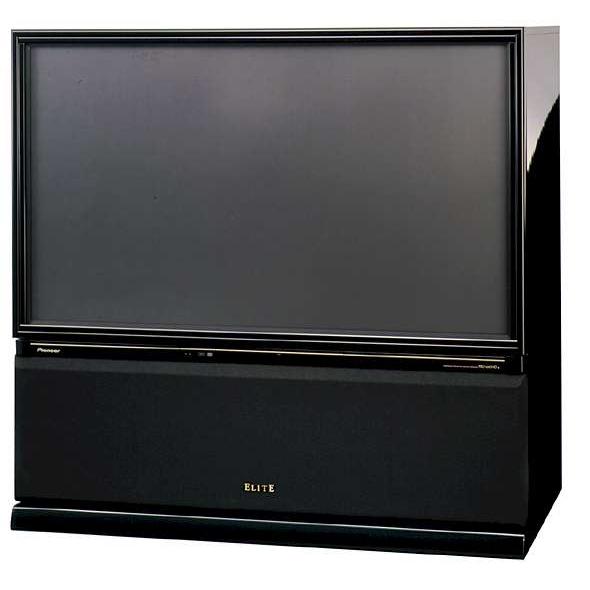-
An Octagon television set. The dials on the front were used to adjust the unit’s picture. (Image credit: earlytelevision.org)
-
Funky designs started appearing around this time — this Philco Predicta from Brazil suspended the picture tube; it was a 'floating glass' concept 50 years before Sony’s XBR LCD televisions hit the market. (Image credit: tvhistory.tv)
-
LCD screens are now more popular than they have ever been, but plasma technology is also evolving. This Pioneer PDP-LX609A is the last model ever from the leading plasma panel manufacturer — and it is widely considered to be the best television on the market at the moment in terms of image quality.
-
The Baird Model C was another early mechanical television set. (Image credit: tvhistory.tv)
-
The General Electric 'Octagon' of 1928 is widely considered to be the world’s first commercial television set -- it was the first from the US. It was a mechanical rather than an electronic set and had a 4in screen.
-
The future is also bright, with increasingly thin, power-friendly and high quality panels being released to the market. Sony’s upcoming PDP40ZX1 LCD is less than a centimetre thick for the majority of the screen and features Wireless HDMI connectivity.
-
HDTV was also reaching maturity, with televisions capable of displaying Full HD 1080p footage available on the market for reasonable prices. The Sony Bravia KDL46X2000 was able to display 1080p — and cost $7000.
-
In the mid-1990s rear projection televisions hit the mainstream market. This Pioneer Elite 65in model of 1995 was the cream of the crop. The TVs offered huge screen sizes and a much slimmer profile than the now-bulky CRT.
-
The next evolution for televisions was the introduction of 100Hz frame-doubling technology. This created interpolated frames to smooth out the motion blur and jitteriness that plagued early LCD models. This Samsung Series 6 LA46A650 features 100Hz technology.
-
Televisions eventually evolved into the 'fishbowl' CRT cubes we know today. This 1954 model from RCA had a 17in colour screen. (Image credit: tvhistory.tv)
-
The Panasonic Z1 is the next hot thing — an inch-thick plasma screen with a massive contrast ratio and half the power consumption of the previous plasma generation. It represents the future of plasma television production.
-
Televisions of the 1980s were, by and large, boring. This was the age of bundled remote controls (instead of being slugged with an extra charge for the remote).
-
The post-World War II years saw efforts at further miniaturising televisions with the use of cathode ray tubes — no bulky mechanical parts were needed. This Hallicrafters T-54 Model 505 was a 'portable' model with a 7in screen.
-
Just before World War II broke out, the first electronic TVs were developed. These were significantly smaller than their older mechanical counterparts. This Andrea 1F5 was built in 1939 and had a 5in picture tube.
-
This Keracolour set of 1970 has a striking design, enclosing the picture tube in a spherical white shell. (Image credit: tvhistory.tv)
-
A few years later in 1997 plasma technology came into the limelight. Pioneer was one of the first companies to start selling plasma televisions to the public, and this PDP-501HD from 1999 was one of the first models that could display high-definition content — with a XGA resolution of 1280x768 pixels.
-
By 2005, the CRT was dead — and rear projection died along with it. Almost all televisions sold were flat-panel LCD and plasma screens. Only a few inches thick and with picture quality and resolutions never seen before, this new technology led to a boom in TV sales. This Panasonic Viera TH-42PV500 was a popular choice.
From CRT to Full HD -- the evolution of television
17 Photos
From cathode ray tubes to plasma panels, LCD displays, 100Hz technology and the future of television tech

















